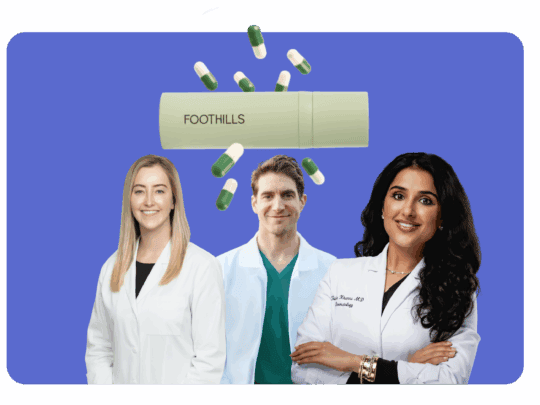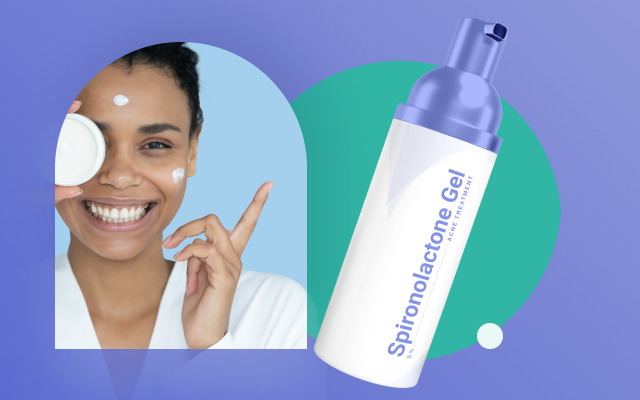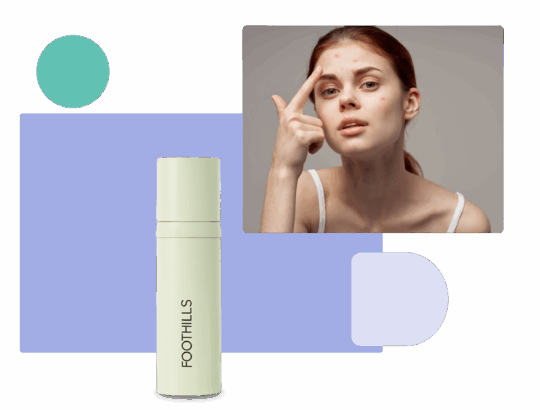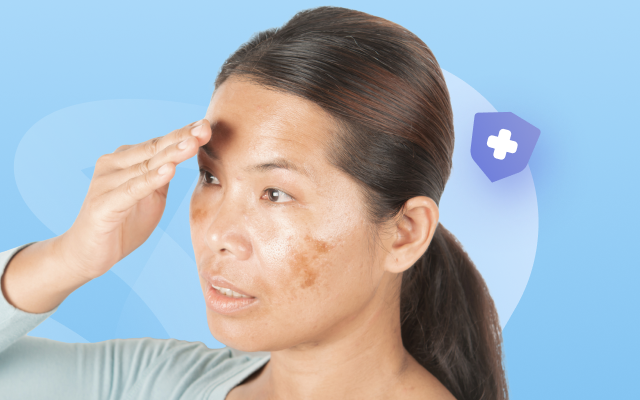Understanding compounded topical spironolactone
Board-certified dermatologist Dr. Carolina Fernandez, tells you everything you need to know about topical spironolactone and how to use it for hormonal acne.
Table of Content:
What is topical spironolactone? | Is it used for acne? | Do you need a prescription? | How to get it? | Benefits | Side-effects | Oral vs topical spironolactone | FAQ
Our commitment to producing high-quality content:
The information presented in this article is based on scientific research and the professional advice of our Content Medical Reviewers, who are experts in the field of Dermatology. How we write our content →
What is topical spironolactone?
Spironolactone is an FDA-approved oral medication for certain conditions. Some healthcare providers also prescribe compounded topical formulations prepared by licensed pharmacies. These topical versions are not FDA-approved and have not been evaluated by the FDA for safety or efficacy.
Is topical spironolactone used for acne?
Some dermatologists may consider prescribing compounded topical spironolactone formulations for select patients during a consultation. These prescriptions are individualized and prepared by a licensed compounding pharmacy.
Important Notice: Compounded topical spironolactone is not reviewed or approved by the FDA for safety or effectiveness. Suitability and use are determined only by a licensed provider following a consultation.
Do you need a doctor’s prescription to buy topical spironolactone?
Yes, you need a prescription to buy topical spironolactone cream, as it is not available over the counter.
How to get an online prescription via Miiskin?
Miiskin connects you with board-certified dermatologists, who may prescribe FDA-approved generics or personalized compounded medications.
If you are interested in a customized formula, simply select Foothills as your pharmacy and place your medication order directly in the Miiskin platform. Foothills will send you a payment link, and once payment is completed, your medication will be shipped free via UPS 2-day delivery.
Transparent pricing: A consultation is typically around $59, and medication refills are around $39. The price of most Foothills formulas via Miiskin is $48.99 with a few exceptions being priced at $58.99 and some hair growth formulas priced at $68.99. You will not be enrolled in an automatic subscription, you will only purchase medication when you need it.
Important Disclaimer: Compounded medications are not reviewed by the FDA for safety or efficacy.
Where are prescriptions filled?
If a provider prescribes a compounded topical formula, it is prepared and dispensed by a licensed compounding pharmacy.
Is topical topical spironolactone used for acne?
Compounded topical spironolactone has been discussed in dermatology as one of several possible ingredients that some providers may consider when treating patients with acne. These topical versions are prepared by licensed compounding pharmacies.
At this time, the FDA has not reviewed topical spironolactone for safety or effectiveness, and there is no standardized formulation. Some research and clinical use have explored its role in dermatology, but results vary and suitability depends on the individual patient.
If you are interested in whether a compounded topical formula that includes spironolactone might be appropriate for you, the decision must be made in consultation with a licensed healthcare provider.
Important Notice: Compounded topical spironolactone is not reviewed or approved by the FDA for safety or efficacy. Not all patients will receive a prescription. Suitability and potential risks are determined by the prescribing provider during consultation.
Topical spironolactone side effects
Because compounded topical spironolactone is not FDA-approved, its full safety profile has not been established. Patients should discuss any potential risks with their prescribing provider.
Reported side effects of topical spironolactone may include:
- Redness
- Itching
- Irritation
- Burning sensation
- Dryness or scaling
FAQ about topical spironolactone
Does topical spironolactone cause purging?
Although it is rare for topical spironolactone to trigger an initial outbreak of acne, an acne flare-up may affect very few patients when they first start using spironolactone.
Can spironolactone be used orally and topically at the same time?
A healthcare provider will determine the most appropriate prescription approach for each patient.
Who should not use topical spironolactone for acne?
Topical spironolactone is antiandrogenic and these medications are not recommended for use during pregnancy or breastfeeding as it is not safe for the baby.
Article References:
https://www.ncbi.nlm.nih.gov/pmc/articles/PMC3763909/
https://www.ncbi.nlm.nih.gov/pmc/articles/PMC8483163/
https://pubmed.ncbi.nlm.nih.gov/36412248/#
https://www.ncbi.nlm.nih.gov/books/NBK554421/
https://www.sciencedirect.com/science/article/pii/S1110116416300333
https://www.dovepress.com/the-efficacy-and-safety-of-oral-and-topical-spironolactone-in-androgen-peer-reviewed-fulltext-article-CCID
https://pubmed.ncbi.nlm.nih.gov/34250269/
https://www.bmj.com/content/381/bmj.p1114#






 Interested in getting a prescription for spironolactone?
Interested in getting a prescription for spironolactone?
